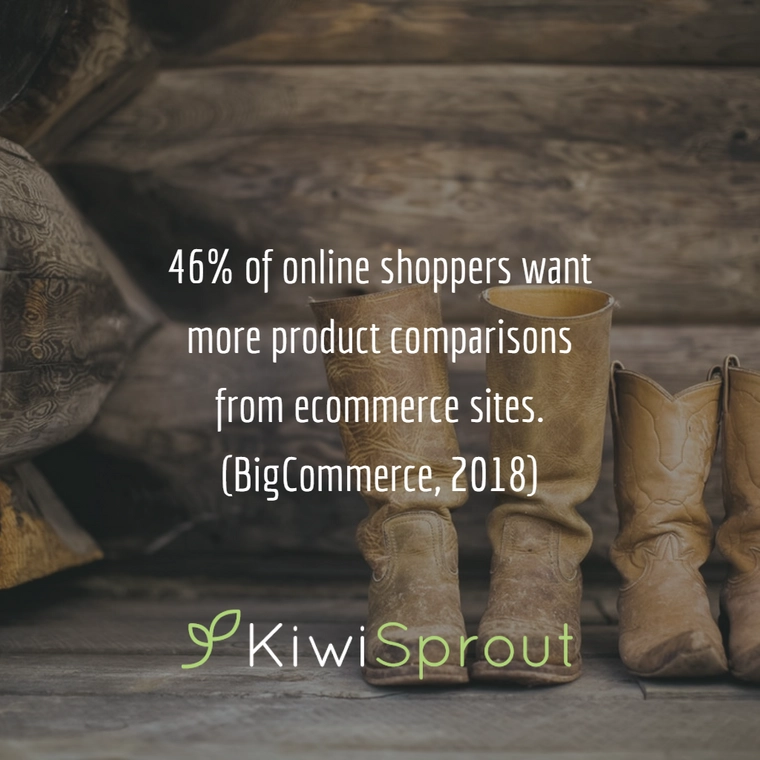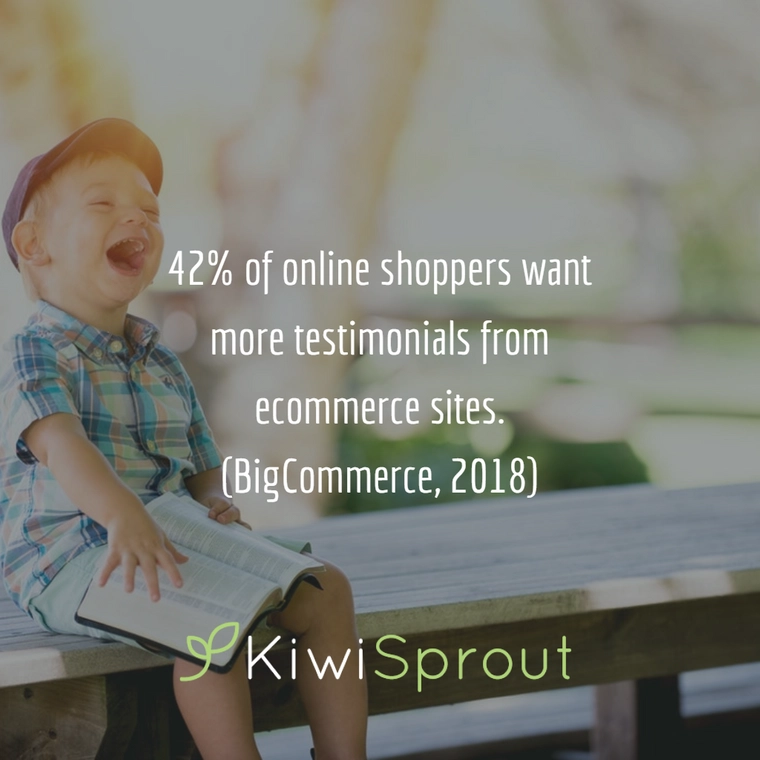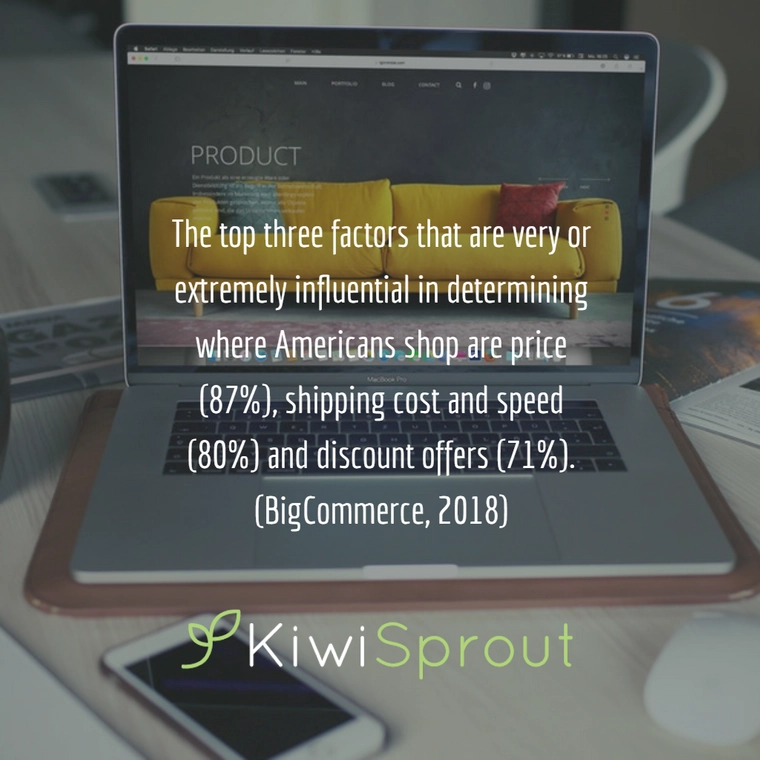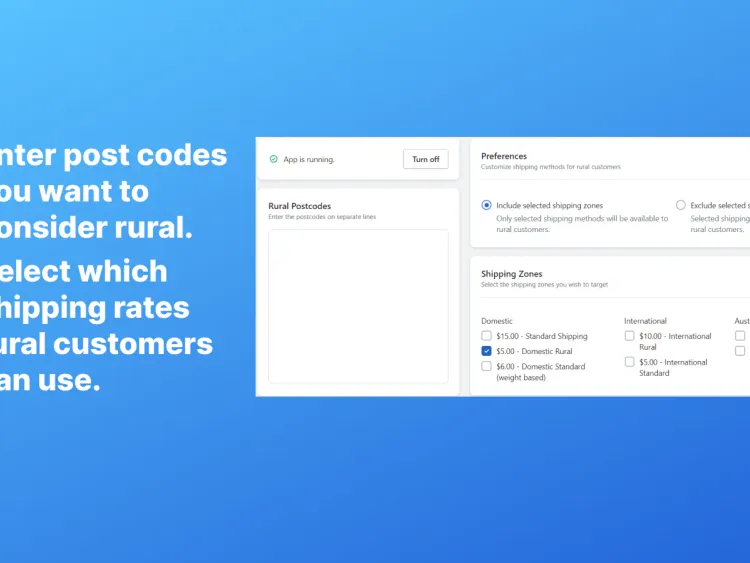
7 Ecommerce Facts That Will Make You Rethink Your Own Website
Ecommerce has had a ton of momentum and it’s only going to be getting even bigger in 2018.
With the increasing trend of ecommerce comes the increasing pressure to get your website’s strategy right, if you want to beat your competition and maximize your sales you have to fine tune your website to turn as much visitors into paying customers as possible.
Recently, BigCommerce released a study on the ecommerce trends and statistics for 2018. This high-level research reveals the habits, preferences and behaviour behind shoppers.
A lot happens in the ecommerce landscape, and you don’t want to get caught lagging behind.
Take a look at these ecommerce facts and I guarantee that if you run an ecommerce website there’s something in here that’s applicable to improving your website.
We’ll be breaking down these facts from BigCommerce, explaining how they could apply to your website and detailing how we can use these facts to improve your own website’s sales.
1.) 66% of online shoppers have decided not to buy an item because of shipping costs.

Shipping, the surprise bane of ecommerce websites. We’ve all visited a website, added a few things to our carts, and then got whammed with some ridiculous shipping costs.
Surprise costs once you hit the cart is a joy-kill for most people, and leads to a massive rate of cart abandonment. People don’t like hidden costs, and shipping usually is exactly that.
In a world where market places like Amazon and Aliexpress are offering free shipping left, right and centre visitors are now primed to not even expect any shipping costs at all.
How do I improve shipping on my website?
One of the first and most impactful things we often do to improve an ecommerce store is remove shipping costs entirely.
Remove shipping costs entirely from your website, and make sure it’s very clear that they’re getting free shipping across the website to reel customers in. Mention free shipping in your homepage, your product pages and your shopping cart so it’s a clear perk of buying from your website.
Another effective strategy is keeping the shipping costs, but run free shipping promotions often with a low barrier to entry. Whenever you run a free shipping campaign, blast it on social media, make a banner for it on your homepage and send out a mass email. This way it turns your websites detractor into a promotion with perceived scarcity.
This isn’t feasible for everyone, but if you’re worried about taking too much of a loss on free shipping you could incorporate it the upfront cost of your item. You could also try it on select items only, keeping shipping on the large items where you would take a loss.
If shipping is still a must, you can take away the surprise of the hidden cost by estimating shipping right in the product page, being upfront about your shipping costs helps to mitigate this massive deal breaker.
We couldn’t recommend doing away with shipping entirely enough though and this continues to be a major strategy for us to improve both sales and revenue of ecommerce websites.
2.) 21% of Americans state that unattractive or hard-to-navigate websites is frustrating when buying online.

Ease of use is everything, if it’s difficult to reach what you want visitors to buy they’re never going to see it, let alone purchase it.
We’ve seen some pretty bad menus in our time, a lot of websites are guilty of contrived main menus or a page structure that requires the user to navigate through too many pages before they reach what they want.
On average, people will only navigate about 3 clicks deep. If your customer can’t find what they want in 3 clicks, they’re not going to buy anything.
How do I improve navigation on my website?
The first step is making sure what you really want people to buy is right on your homepage. This can be done with a “featured products” section, where your featured products are what you really want people to purchase. This way if they’re starting on your homepage, it’s only 1 click to where you need them to go.
Make sure your menu also suits the structure of your website. If you’ve got categories with subcategories before you reach the products, a simple line by line dropdown won’t cut it. Instead build a menu that showcases both the parent categories and subcategories immediately as it appears.
Remember the golden rule, if takes more than 3 clicks to reach somewhere important the structure of your website needs to be revised.
3.) 78% of online shoppers want more images from ecommerce sites.

Images are so ridiculously important for ecommerce websites and often treated as an afterthought.
In a medium where people can’t touch and feel the product, visitors are extremely visually focused.
One stock image you got from your supplier won’t cut it, not only is that incredibly generic but the lack of product photography doesn’t inspire any sort of confidence or trust in the product.
Similarly, poor quality photos will make even a great product appear to be as equally low quality as the photo.
Blurry, bad angle or poor lighting photography will hurt your sales because if the shot is cheap it infers the product will be equally as cheap.
How do I improve photos on my website?
For every product, there should be at least 3 photos. The more photos you have of a product, the better.
Try to capture as many angles of the product as possible; the less it looks like you’re trying to hide something about the product the more confident users will be in their purchase.
If you don’t have the means to take high quality photos yourself, hire a professional photographer. Getting photos of your product that are both unique to you and taken with a high production quality helps with both your brand image and bottom line.
4.) 30% of online shoppers want more video from ecommerce sites.

Video is a rising trend, and it’s made its way into ecommerce too.
Videos help to show the product in action and bring life to the product, visitors love to hear a breakdown about the products specifications and see it working before they make their purchase.
Despite this, not many people are taking advantage of video on their ecommerce sites. Not only because it has a perceived high barrier to entry, but often videos also break the standard moulds of design.
How do I improve videos on my website?
Don’t underestimate the ability to create high production quality videos without all the gear, most phones these can produce video to a high enough quality to make videos without a ridiculously high budget.
Try to incorporate videos into your own website; you could achieve this by making product review videos, videos of the products in action or even just a simple video detailing the specifications of the product.
Integrate videos into your product where you product displays and manages the images for a seamless product experience.
5.) 46% of online shoppers want more product comparisons from ecommerce sites.

Product comparisons are very common in online marketplaces, but few ecommerce sites compare their products.
There’s no disadvantage to comparing your products against each other when you own all of them, you’re just helping them to choose what product of yours is best for them.
Often product comparisons will compare details like product specifications, price, warranty and product rating.
How do I improve product comparisons on my website?
If you have a set of very similar products, like a product with a normal and a “pro” version, include in the products page a comparison of the two products.
This way it shows what people get with one product that they don’t with the over, allowing you to potentially net a higher price point sale or helping the user select a less expensive product that meets their needs.
6.) 42% of online shoppers want more testimonials from ecommerce sites.

Like reviews, testimonials are the bread and butter of ecommerce.
Testimonials are a vote of confidence in a product, and social proof that buying your product is worth the cost.
This is especially effective if the testimonial is coming from an industry authority as this provides both the influence factors of authority and social proof to sway users.
How do I improve testimonials on my website?
The first step is asking for them, find people who have purchased from your website and ask them if they were happy with it.
If they weren’t happy with their purchase, learn from their feedback. Otherwise, ask them if they’d be willing to provide a testimonial for your product to put on your website.
Once you’ve netted a few good testimonials, put them on your home page and on the product page. If they’re an authority, make sure to include their full name. Otherwise, keeping just their first name is fine to maintain anonymity while still maintaining a level of authenticity.
7.) The top three factors that are very or extremely influential in determining where Americans shop are price (87%), shipping cost and speed (80%) and discount offers (71%).

Price, shipping and discounts. These are the 3 most influential factors of any ecommerce website.
If you haven’t got these 3 key factors perfected for your website, especially within the context of your industry and commodity, you need to focus your attention onto fine tuning these factors.
How do I improve price, shipping and discounts on my website?
You have to first know what’s not working as well as it could be. The first way you can understand which of these are pain points for customers is asking them, craft a survey around these factors and analyse the responses to assess what needs to be improved.
The second way is by using your existing data to make assumptions on what the pain points are. If no one’s adding anything to their cart, then price could be a detractor, but if a high percentage are adding products to their cart and abandoning it on your shipping page, you could infer that shipping is the deal breaker.
When you know what you have to work on, do your research for your industry to see what competitors are doing for their websites and experiment with different strategies to see what works best for you. There isn’t a blanket strategy that applies to everyone, so the only way to know what works best is by listening to your customers and trying out different strategies.


